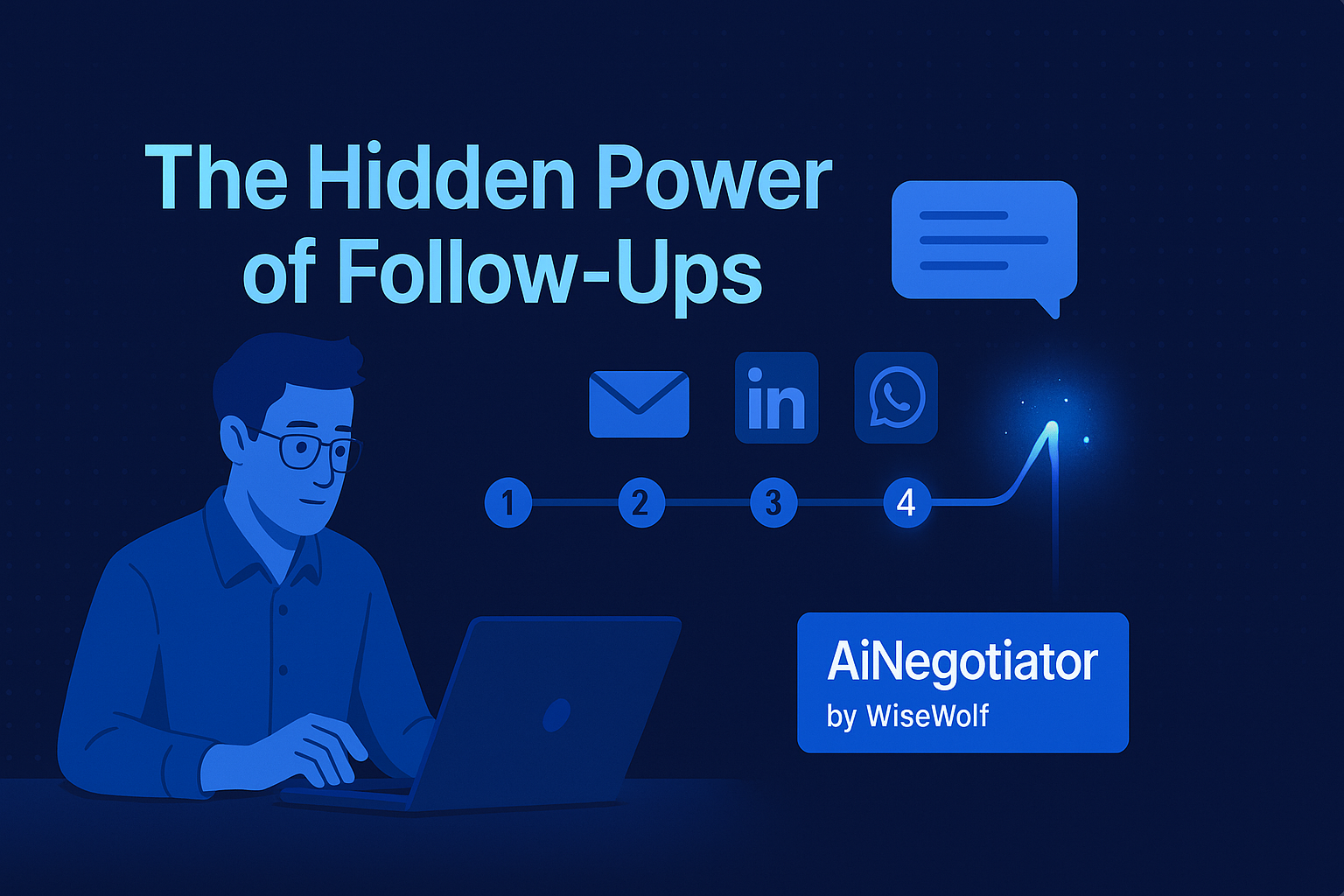
The hidden power of follow-ups: Why most deals are won after the first “No”
Published: 8/24/2025
In the competitive world of B2B sales, few tactics are as underestimated—and as powerful—as the follow-up. Many early-stage founders and sales teams give up too early, mistaking silence for rejection. But research consistently shows that over 60% of deals are closed after the fourth follow-up.
So why do most startups stop at one or two? The answer lies in how founders view the sales process—and in the mindset shift needed to transform “no response” into “yes, let’s move forward.”
Why follow-ups define sales success
Sales isn’t just about the first pitch. Prospects are busy, distracted, and often evaluating multiple priorities at once. Your solution may be valuable, but without timely reminders and continued engagement, it’s easy for your product to slide down their list.
Follow-ups do three critical things:
- Build trust over time – Consistency signals professionalism and reliability.
- Re-surface urgency – Reminds prospects why the problem matters now.
- Keep your pipeline alive – Prevents leads from going cold before decisions are made.
The 3 most common follow-up mistakes
1. The “Just checking in” trap
Generic reminders like “Just checking in to see if you had a chance to review…” add no value. They remind the buyer you want something but don’t give them a reason to respond.
Fix: Every follow-up should provide value—share a case study, address a common objection, or highlight a new feature that solves their pain point.
2. Following up too late
Waiting weeks—or even months—between touchpoints makes you forgettable. By then, competitors may have already engaged them.
Fix: The ideal timing is 48–72 hours after the initial call, followed by a structured cadence: 1 week, 2 weeks, 1 month. Each touchpoint should escalate relevance.
3. Losing track of conversations
Without a system, founders lose context: which prospect said what, what objection was raised, and what next step was promised. This leads to clumsy follow-ups that erode trust.
Fix: Use a CRM or AI-powered tool to track every conversation thread, objections, and outcomes. This allows each follow-up to feel personalized and professional.
Mastering the art of effective follow-ups
Successful follow-ups are not about persistence alone—they’re about strategic persistence.
Key tactics include:
- Multi-channel engagement: Mix email, LinkedIn, and WhatsApp to stay visible.
- Personalization at scale: Reference their business priorities, team, or recent updates.
- Strategic silence: Ask a direct question, then pause. Give prospects room to respond honestly.
- Objection discovery: Use follow-ups to uncover hidden hesitations rather than waiting for them to surface.
When done right, follow-ups become part of lead nurturing instead of “chasing.”
The startup advantage in follow-ups
Large corporations often rely on rigid processes and scripted touchpoints. Startups, on the other hand, have the advantage of speed, flexibility, and authenticity.
A founder-led follow-up carries weight: it shows commitment, adaptability, and genuine interest in solving the prospect’s problem. Combined with AI tools that keep you consistent, this agility can be a game-changer.
How AiNegotiator makes follow-ups smarter
At WiseWolf, we built AiNegotiator because we know that follow-ups make or break sales outcomes. Our tool empowers sales teams to:
- Track and centralize conversations across Gmail, LinkedIn, WhatsApp, Telegram, and Messenger
- Get AI-generated recommendations on when and how to follow up
- Detect and summarize unspoken objections so you can address them early
- Automate reminders, ensuring no lead slips through the cracks
With AiNegotiator, following up is no longer guesswork—it’s a data-driven, personalized process that increases conversion rates.
Key takeaways for founders
- Over 60% of deals are won after multiple follow-ups—don’t stop too early.
- Avoid empty “check-ins”—always add value.
- Build a structured cadence and use multi-channel engagement.
- Track every conversation to personalize and professionalize follow-ups.
- Use tools like AiNegotiator to stay consistent and never miss a deal.
